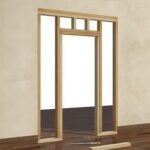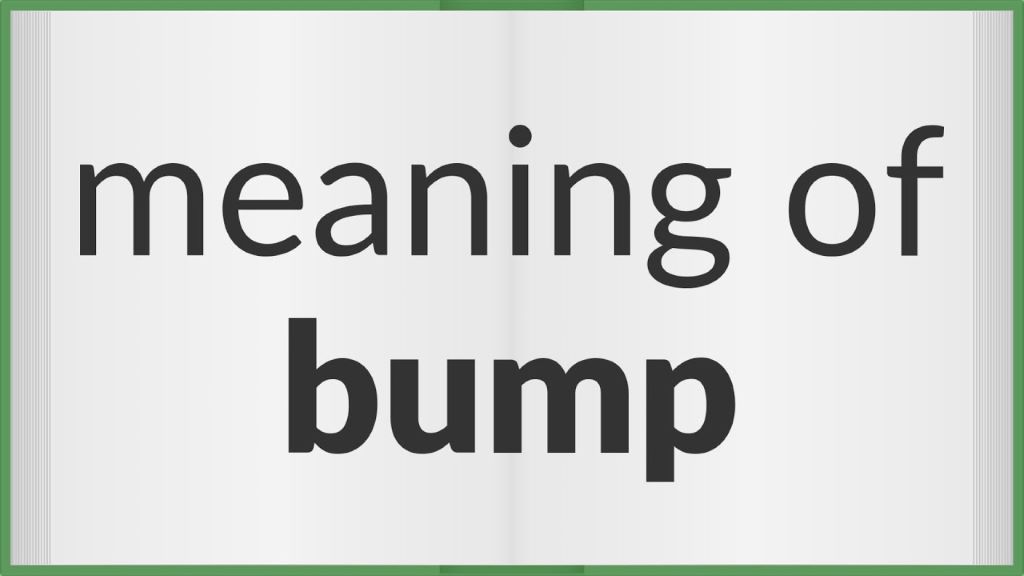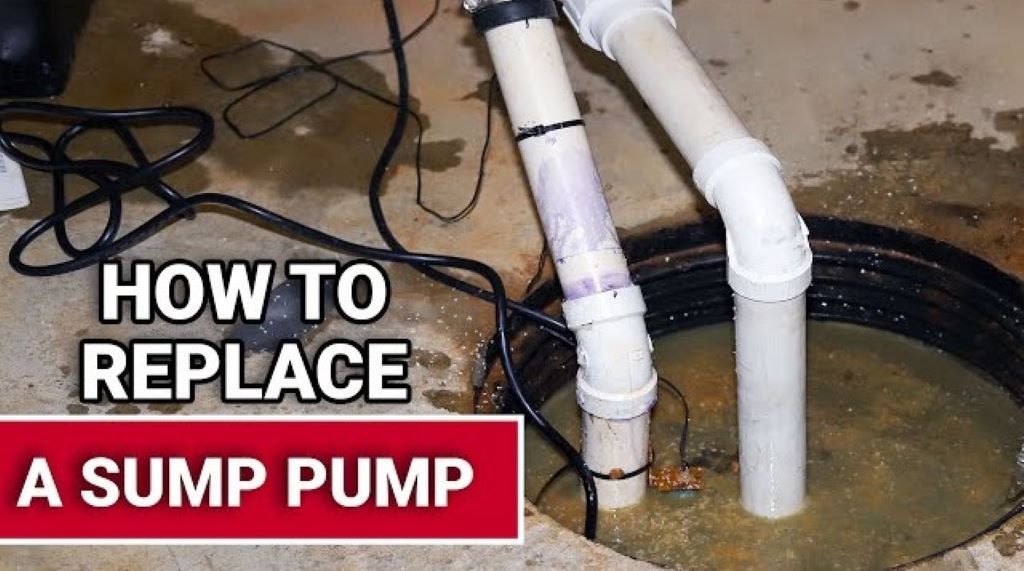Having a swimming pool in your backyard is a dream for many homeowners. Nothing beats taking a dip on a hot summer day or doing laps for exercise. But like any major investment, pools require regular upkeep and maintenance. One of the most important components is the pool liner.
How long does a pool liner last? The lifespan of a pool liner depends on several factors, including the material, quality of installation, geographic location, pool usage and maintenance. With proper care, a good quality liner can last 5-10 years on average. Some may even last up to 15-20 years before needing to be replaced.
Let’s take a closer look at what affects the longevity of pool liners and how to make yours last as long as possible.
What is a Pool Liner?
A pool liner, also known as a swimming pool liner, is a large sheet of waterproof material that covers the interior surface of an in-ground swimming pool. It helps contain the water and protect the structure of the pool. Liners are available in different materials such as vinyl, fiberglass and concrete/gunite.
Vinyl is the most popular and affordable option. It comes in a variety of patterns and colors to match your poolscape. Fiberglass liners are more durable but also more expensive. Concrete or gunite liners are integrated directly into the pool structure but have a shorter lifespan. They also require re-plastering every 8-12 years.
Factors That Determine Pool Liner Lifespan
Several key factors impact how long your pool liner will last before needing replacement:
Liner Material
The type of material has a significant effect on durability. Here are the average lifespans for each:
- Vinyl liners – 5-10 years
- Fiberglass liners – 10-15 years
- Concrete/gunite liners – 8-12 years
Thicker vinyl liners (30-35 mil) tend to last longer than thinner ones (20-25 mil). But they are also pricier. So you have to find the right balance for your budget. Upgraded textures and high-quality inks can also enhance longevity.
Fiberglass liners are more rigid and better able to withstand wear and tear. The gelcoat surface resists fading, staining, and damage from pool chemicals.
Concrete or gunite pool liners are quite durable when properly maintained. But they need to be re-plastered periodically to keep them looking fresh and clean.
Installation Quality
Proper installation is crucial for getting the maximum lifespan out of any pool liner. Hiring a reputable company and certified installer ensures the liner fits right and gets adequately secured.
Wrinkles, bubbles and improper sealing around the edges will shorten the liner’s life. That’s because these flaws allow water behind the liner, leading to premature breakdown. A smooth and tight installation prevents such issues.
Pool Use Frequency
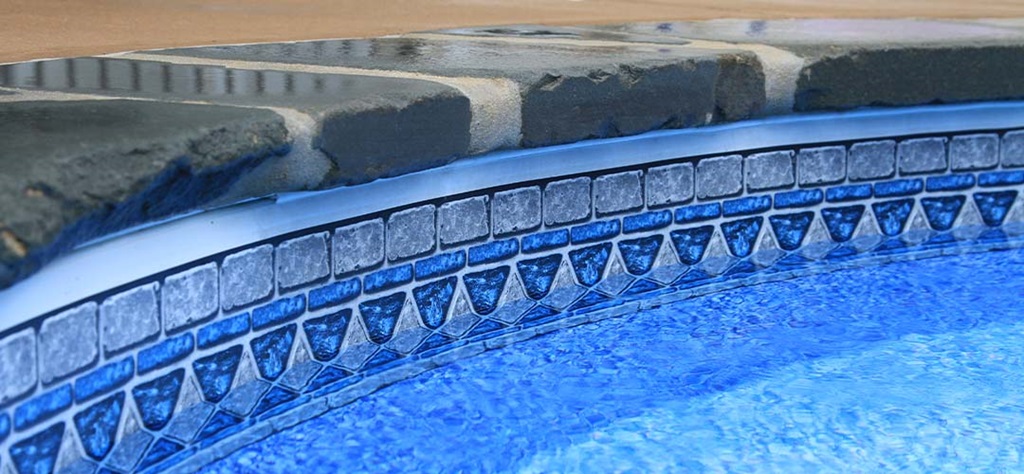
How often the pool gets used significantly affects liner wear and tear. A frequently used pool needs its water chemistry checked more often to balance chemicals and prevent damage.
Heavy use also means more dirt, leaves, debris and general weathering from the sun. So the liner will show age faster unless you stay vigilant with maintenance and cleaning.
For a family that swims daily during summer, the liner may only last 5 years. But with lighter use of just weekends or summertime parties, it could easily reach 10+ years.
Geographic Location
The climate where your pool is located impacts durability.
In cold northern regions, freezing winter temperatures and ice damage can weaken liners more quickly. Thawing and refreezing causes expansion and contraction that places stress on the seams.
In warm southern areas, high heat and more intense sunlight degrade materials faster through UV damage. And year-round swimming means higher usage and wear compared to seasonal pools up north.
Pools in mild climates will generally see the longest liner lifespans. You get less temperature extremes and many homeowners winterize their pools, giving the liner a chance to rest.
Pool Structure and Surroundings
The condition of your pool’s shell, plumbing, and surroundings also play a role in liner longevity.
Cracks or defects in the concrete or gunite shell can allow moisture behind the liner that accelerates breakdown. Proper pool resurfacing before installing a new liner provides a smooth and sturdy foundation.
Nearby trees and landscaping need to be properly maintained as well. Excess leaves in the pool and roots compromising the shell can damage the liner.
Low spots or water drainage issues that cause standing water against the liner should be fixed. Otherwise, you’ll get premature liner failure in those spots.
How to Make Your Pool Liner Last
With a quality installation and proper care, there are ways to maximize the lifespan of your pool liner:
- Maintain proper water chemistry – Test and adjust chemicals like chlorine, pH and alkalinity per manufacturer recommendations. This prevents damage from unbalanced water.
- Monitor and treat your water – Keep levels of calcium, iron, copper and other minerals in check. Use a clarifier or flocculant regularly to remove particles that can stain or degrade the liner.
- Clean often – Use brushes, vacuums and surface skimmers to remove debris before it settles. Dock plates, pool robots and pool sweeps also help scrub and circulate the water.
- Shock periodically – Oxidizing shock treatments help maintain sanitizer levels and burn off contaminants that dull the liner.
- Watch the water level – Don’t let the level drop too low where the liner could get exposed to direct sunlight and heat. The pooling of water in sections can also damage the vinyl.
- Use pool covers – A cover minimizes wear and tear when the pool is not in use. It also reduces the need for chemicals, lowers heating costs and keeps out leaves/debris.
- Handle chemicals carefully – Don’t pour chemicals directly on the liner. Dilute in buckets first to avoid bleaching or damaging concentrated spots.
- Inspect often – Check for early signs of wear like thinning spots, discoloration or seam separation so you can repair or replace the liner before major failures occur.
When to Replace Your Pool Liner
There are definite signs that indicate when it’s time to replace your pool liner:
- Visible tears, holes, or rips anywhere on the liner
- Severe staining that can’t be remedied and affects the overall look
- Iffy patches or thin spots that seem ready to tear soon
- Seams coming apart or lifting up
- Wrinkles and bubbles that worsen over time
- White haze that won’t brush or wash off
- Rolled up sections that won’t lay flat
Once the liner shows obvious signals of breakdown, covering patches or trying home remedies tends to just delay the inevitable. Replacement will likely be needed within the next year or two.
Many homeowners plan to replace the liner every 8-10 years as part of routine maintenance. This helps you avoid emergency repairs or liner failures at inopportune times.
Cost to Replace a Pool Liner
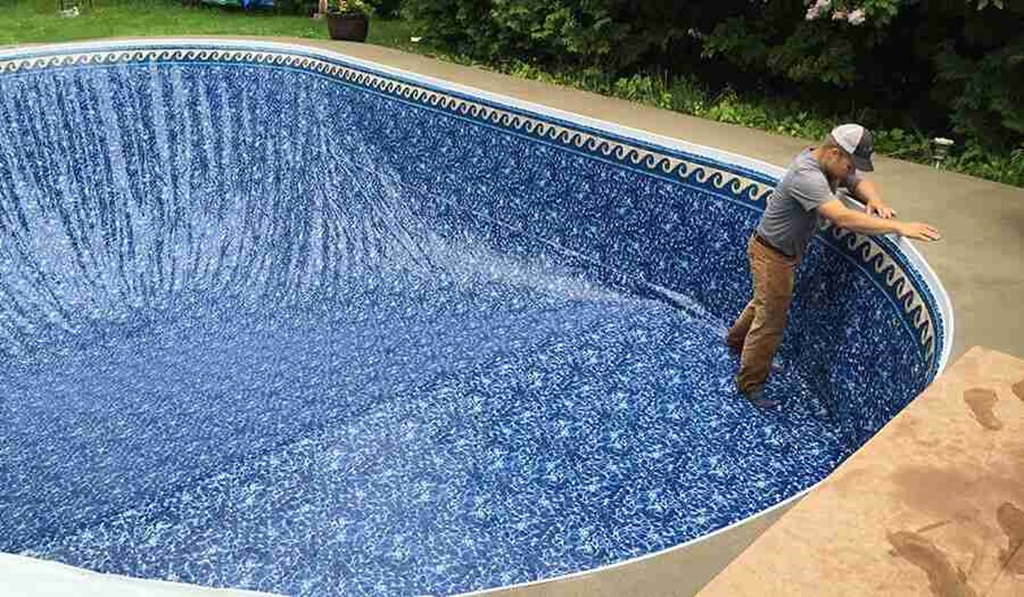
The cost to replace your pool liner will depend on a few factors:
- Liner material – Basic vinyl liners start around $1,500 installed. Upgraded fiberglass liners can run $3,500 to $6,000 or more.
- Liner thickness/quality – Typically 20-25 mil vinyl liners cost $1,500-2,500. Heavier 30-35 mil liners are $2,500-4,000.
- Pool size – The larger the pool, the bigger the liner required and higher installation costs.
- Additional repairs needed – Issues like cracks in the pool shell, plumbing leaks, or resurfacing will raise costs if fixed at the same time.
- Location – Prices are usually higher in areas with higher labor costs.
On average, expect to budget $2,000 to $4,000 for a new vinyl pool liner installed. The investment will be worthwhile to restore your pool’s appearance and ensure safe, enjoyable swims for years to come.
Conclusion
The lifespan of your pool liner depends on several factors, but with proper routine care you can expect to get 5-10 years out of a vinyl liner or 10-15 years from a fiberglass liner before replacement is needed. Stay diligent with maintenance and cleaning to maximize longevity. Watch for telltale signs of liner wear and deterioration over time. With some attention and care, you can keep your pool liner in tip-top shape for seasons of swimming enjoyment.
FAQs
How often should I replace my pool liner?
With proper installation and care, vinyl liners average 5-10 years, fiberglass 10-15 years, and concrete/gunite 8-12 years before needing replacement. Heavier use and poor maintenance shorten these timeframes.
What is the best material for pool liners?
Vinyl and fiberglass are the top choices. Vinyl is affordable and offers good longevity. Fiberglass is more durable for longer life but also pricier. Concrete or gunite liners integrate into the pool structure but require frequent resurfacing.
Can I patch my pool liner instead of replacing it?
For minor holes, tears or seam separations, patching kits can temporarily fix the liner. But once the liner shows signs of serious breakdown, patches won’t offer a permanent solution and full replacement is recommended.
How long does it take to replace a pool liner?
The complete replacement process typically takes 2-3 days. Day 1 involves draining the pool, removing the old liner and doing any needed repairs. Day 2 is installing the new liner and refilling the pool. Day 3 allows the liner to settle before final adjustments.
Should I replace my pool liner myself or hire a professional?
Proper liner installation is crucial for longevity, so it’s highly advisable to hire a qualified pool company. DIY installs often result in wrinkles and improper sealing that shorten liner life. The cost is worthwhile to ensure it’s done right.






